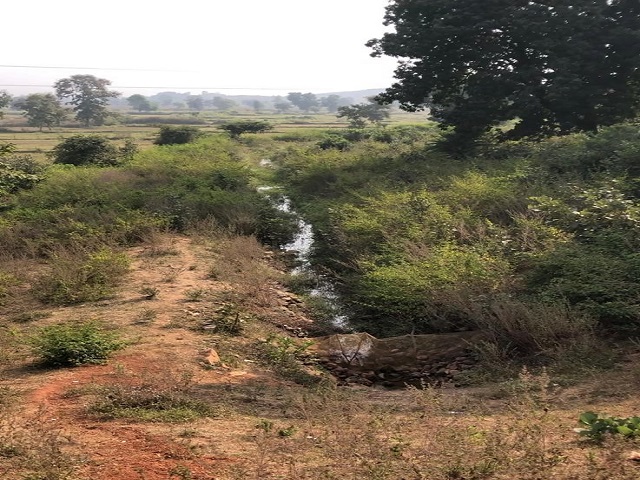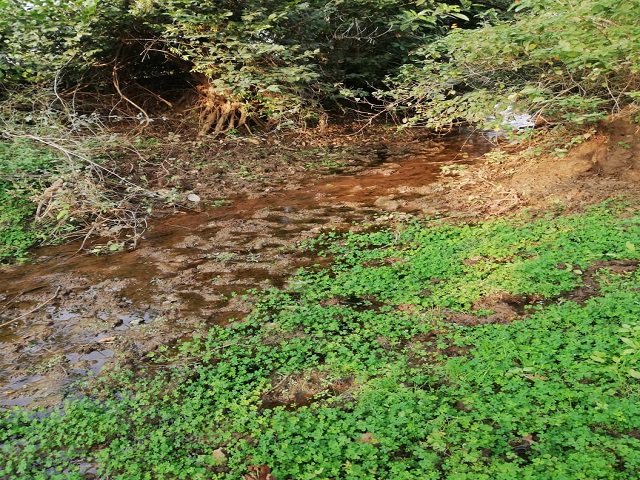Let me introduce myself to you. I am Kanari, born as a river from the lap of the Ghutehi hills in Ghutehi village from Jabalpur district in Madhya Pradesh. I flowed down the hills as a dancing damsel showering love and warmth everywhere on my way towards unknown regions. Throughout my childhood, I was surrounded by greenery and trees and flowers were my friends.
I was full of life and grew in strength, keen to explore the world and determined to tide over any difficulty on my way. I flowed with great enthusiasm and strength, oblivious of the harsh tract that I had to trace to reach the valley below. I was surrounded by beauty all along the path I flowed that was rich with trees, flowers, and the precious water and silt that I brought down along with me were of great importance and of great use to the people who settled on my banks.
Even though I was not a very big river and had an expanse of 298 km2, I was big enough to support livelihoods of people who stayed along my banks and it felt great to be useful to so many people and the environment. I also found a companion along the way, the Suhar river who was just like my little sister. Myself and the Suhar river traverse a long course together until we finally meet our mother the Narmada!
Bye-bye good days
But these joyful moments were short lived and my condition deteriorated day by day. My situation right now almost seems pitiable. Humans staying on my banks and who I considered my well wishers turned out to be my biggest enemies. Inspite of industrialisation, commercialisation and liberalisation that I witnessed after independence, my land is still an agrarian land as 70-75 percent of the population still depends on agriculture.
I even witnessed the Green Revolution around the sixties, that proved out to be a boon in terms of enhancing agricultural productivity, but it exploited my river bed beyond repair.
I am disheartened and shattered when I look around, the forest cover in the mountains is gone, my plains and valleys are no more beautiful, my people are starving, robbed of their livelihoods because of my pitiable condition. I am voiceless and very angry on being neglected by people inspite of having served them for a long time.

I no longer have enough water in my lap after September or October. My creeks are drying? Why is this so? Though I am bringing even more amount of water from my father “Ghutehi hill”, why am I drying up as I keep flowing? Is this an indication of my near death? Who will help me now?
After the fall, a ray of hope
I remember that day. It was 28th Oct 2018, when I was taking my last heave for this year. I suddenly noticed a car approaching me. I was anxious, what had brought them here?
I saw a girl along with 3 men and some instruments in their hands come to me. I thought, why are they so much interested in me? Then I heard a voice asking, "How are you?I heard the same voice again, this time little more generous. "How are you...Are you doing well?"
I couldn’t believe my ears. This was for the very first time in my entire life that someone spoke to me. Although I was not well, still this question made me answer “I am good”. She replied “I can see, you are not well, your health is not good. You can share your pain with me”. By consoling me she introduced herself as a Research Scholar, studying in JNKVV, Jabalpur.

By hearing about Jabalpur I was filled with tears as it used to be my final destination long back where I used to meet my mother river Narmada along with my sister river Suhar. It's been more than a decade since I have met them because I am not able to approach them as my flow ceases before I can reach them. She told me that she was here to do everything possible to help me.
Here comes my saviour
The young girl after her detailed research acquainted me with the core cause behind my inability to flow. She updated me with numerous scientific as well as practical approaches that were carried out in her laboratory utilising various spatial data from USGS Earth Explorer, NASA, Bhuvan, ISRO for preparing Land use/Land cover maps using ArcGIS and ERDAS Imagine software.
Through her spatial and temporal investigation it was found that the changes around me, the habitation and mining activities had increased by 98.3 percent and 67.2 percent from the year 1990 to 2019 respectively, resulting in groundwater overdraft and decrease in forest cover, vegetation and water bodies by 63.2 percent, 64.64 percent and 91.7 percent respectively.
As a consequence, my stream acreage was converted into waste land and agricultural fields. In quantified terms, she told me that waste land and agricultural fields were enhanced by 90.61 percent and 52.92 percent resulting in the shifting of my origin by 1.07 km. She felt very sorry for my state and said that she would soon return with some solution to my present condition.

Return of the river
On another fine day, she gifted me with the news of resolving my agony by her integrated approach of Remote sensing, GIS and SCS-CN method. I was briefed with the approaches that were applied:
- She applied water table fluctuation method by observing POWs for knowing various flow regimes of mines including the return flow, vertical percolation of groundwater, recharge occurring due to surface water tanks, base flow and annual discharge by natural springs.
- She even applied various practical approaches including tracer-dilution method and isotope method for discharge measurement across my stream.
- She integrated SWAT model along with ArcGIS for knowing the dynamic of the region.
- After identifying prone zones that hampered the base flows, she demarked my catchment area into 28 micro-watersheds and planned to install water harvesting structures (WHS) on those zones. Taking in consideration lowland, upland, soil type, thematic map of the area i.e land use, hydrologic soil groups, slope and DEM she applied geospatial techniques for tracing WHS that were applicable at the prone zones.
- She finally proposed Nala bunds, KT weirs, percolation tanks, gully plugs, MI tanks at different parts of my stream.
She told me that for the accomplishment of this we were in need of funds and when we proposed our work with many other objectives at renowned NAHEP-CAAST program it was highly appreciated among all the proposals across India and thus, we received a project regarding my revival worth ₹17.50 crores in May 2020.
Now, with this water harvesting structures installation planned to be done in the upcoming months I am hopeful that I will regain my prosperity, strength, and will soon meet my sister and mother after a long time!













